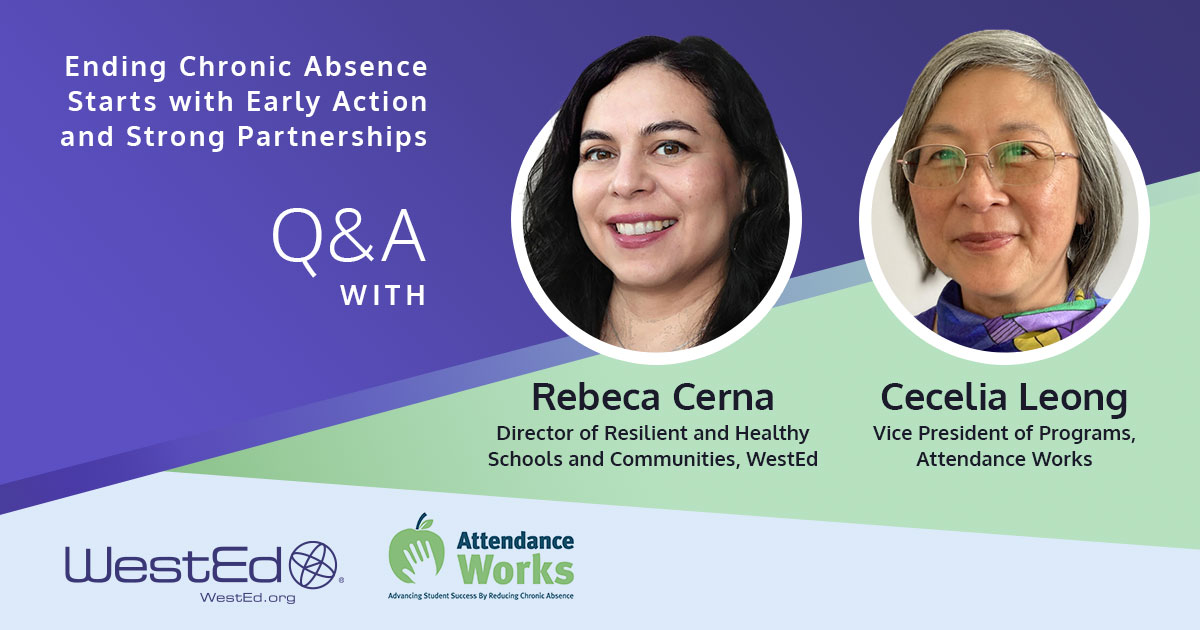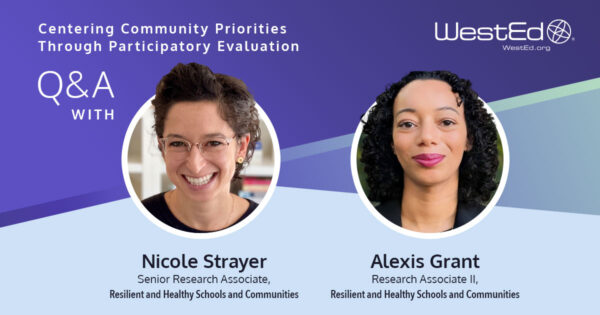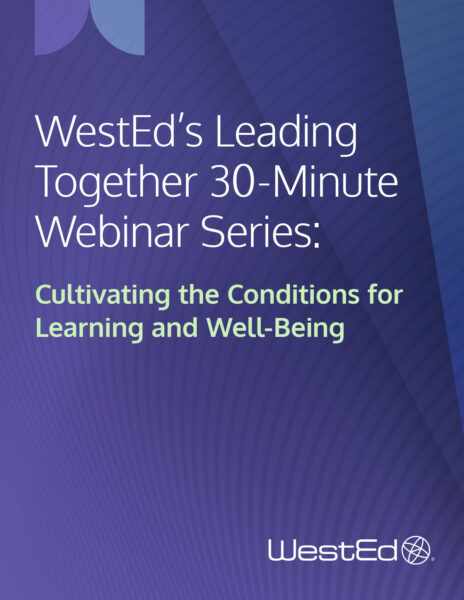
August 20, 2025
Chronic absence continues to undermine student achievement nationwide. As schools across the country prepare for the academic year, many administrators are working on approaches to the problem.
Monitoring and addressing attendance issues from Day 1 is essential to keeping students on track. Research shows that attendance patterns in September are strong indicators of future absenteeism. Half the students who miss 2–4 days in the 1st month are significantly more likely to end up missing nearly a month of school.
Effectively addressing chronic absenteeism requires that state and local education agencies, community organizations, and policymakers collaborate in identifying and scaling proven prevention and intervention models.
California reduced its chronic absence rate to 20 percent in the 2023/24 school year from 30 percent in 2021/22. Now, they’re taking a comprehensive approach to reduce chronic absence to 12.5 percent by 2030. In partnership with Attendance Works, the California Department of Education (CDE) released a new guide to help schools, districts, and county offices of education improve attendance and engagement.
WestEd and Attendance Works have collaborated on various initiatives over the years. In this Q&A, Cecelia Leong, Vice President of Programs at Attendance Works, and Rebeca Cerna, Director of Resilient and Healthy Schools and Communities at WestEd, discuss the new guide and provide their insights on chronic absenteeism and actionable steps education leaders can take to strengthen student engagement.
Cecelia: So many things are still the same in terms of challenges for kids getting to school. They still struggle with things like transportation, weather, health, etc., but what’s new recently has been this idea that in-person school is optional or isn’t as important as it used to be. There’s been a shift in how families and students think about in-person school, and that’s a real challenge because the research is clear that at a certain level of absenteeism, you’re going to see negative results.
But because we had an experience [COVID] in which students learned from home for an extended period of time, I think many have come to believe that “Oh, I can make up for not being in school by just doing a homework packet or being online.” It feels more optional than it used to be. So, that is really a challenge in terms of talking with families and students about the need to be in person.
So, going deeper on this issue of shifting attitudes about in-person attendance, the Ad Council Research Institute conducted research last summer, including focus groups with families and a survey of 5,000 families nationwide. And what used to work prepandemic is telling a family, “If you miss 2 days a month, every month over the course of a year, that’s going to lead to your child falling behind academically. They’re not going to read at grade level in 3rd grade. They’re not going to achieve in middle school. They’re more likely to drop out as opposed to graduating from high school.” Then came the pandemic, where many, many, many students missed 2 days or more a month. And I think those negative outcomes didn’t seem so convincing anymore.
What the Ad Council found was that emphasizing the benefits—the social and developmental benefits—of being in school was more persuasive than scolding parents. It’s kind of the fear of missing out, right? Sports, clubs, friendships, developing soft skills, being part of a larger community—those were the things that were harder to do by yourself online—those were the things that were more appealing.
Cecelia: The guidance focuses on three major areas, health, well-being, and safety; family engagement; and student connectedness because they address the root causes of absenteeism.
We heard a lot, pretty much in every community we went into, about anxiety, depression, mental health issues, and school refusal. And, in many districts, we saw a lack of clarity about how sick is too sick to attend school. Even before COVID, the number 1 reason kids missed school was sickness. And so, health has to be part of the solution—having healthy food, adequate exercise, sleep, or access to healthcare.
Family engagement is critical. For many first-time parents, sending a 4-year-old to school can bring a mix of hopes, big emotions, and fear. That’s why it’s so important to be intentional about building trust. Parents need to feel confident that the school will care for and support their child. When that trust is built intentionally, families become more engaged—they understand what’s going on, they feel like true partners, and they’re more likely to make the effort to get their kids to school.
Finally, student connectedness—that sense of being part of the larger community—is needed. There have been several surveys conducted by youth-serving organizations, and every one of them identifies things like a feeling of not belonging in school, feeling disengaged, and feeling a lack of safety.
Cecelia: Like California did over a decade ago in making chronic absence an important student outcome in LCAPs, many other states have made reducing chronic absence a priority.
Connecticut has provided actionable data to help schools and districts move toward early intervention by publishing monthly chronic absence data—Rhode Island does it daily with live updates. Leadership from Governor Lamont and Superintendent Tucker in Connecticut has made attendance a key part of student success. One standout initiative was the Learner Engagement and Attendance Program, funded through the governor’s COVID relief funds, to address rising chronic absenteeism. It involved community organizations and school districts conducting relational home visits to reengage families and connect them with resources like summer school or information about fall enrollment. The program led to improved attendance, especially at the secondary level.
Virginia has also done excellent work supporting its school districts with team training and toolkits. For example, the state superintendent outlined five clear action steps, including “breakfast after the bell” as an evidence-based strategy to boost attendance.
Colorado has joined the national challenge to reduce chronic absence by 50 percent in 5 years—along with California—and went further by issuing the challenge directly to its districts. Many have signed on, with the state providing support to implement their strategies. So, it’s very exciting when we see states being intentional and taking action. Case studies for Colorado and Virginia, including results, are available on our website.
Cecelia: One of the most effective approaches is breaking down silos and fostering collaboration across departments—such as integrating attendance, academics, and behavior supports—to address the whole child. Conducting relational home visits, engaging in respectful communication, and creating a sense of belonging have proven especially impactful in sustaining strong family engagement and student connectedness.
County offices of education and community groups can make a difference by helping coordinate services, improving access to mental health support, and reducing administrative burdens on districts.
Also, I think after-school programs are a great opportunity to connect students with activities that spark their interest in learning—whether that’s STEM, STEAM, robotics, or something else. Another powerful example is CTE programs, where students start to see the real-world purpose behind what they’re learning. These programs show them how their education connects to future careers and often include apprenticeship opportunities as well.
Rebeca: This work is a journey that should focus on progress over quick fixes. WestEd’s Resilient and Healthy Schools and Communities [RHSC] team partners with schools, districts, county offices, and community organizations to provide training and coaching on school climate and effective data use.
We help educators analyze, interpret, and act on data in collaboration with parents and students. Our school climate data use peer networks bring teams together for meaningful conversations, while our school climate collaboratives support districts in improving practices and building capacity.
We also facilitate sessions that help teams identify strengths and needs, cultivate student agency, and engage families through student listening circles, family forums, individualized coaching, and technical assistance.
To support this work, we’ve developed tools such as the Guide for Exploring School Climate Data and a range of resources to promote positive school climate practices. And at every step, we honor the unique strengths and expertise each school, district, and community brings to the table.
For example, one district we worked with had a single person responsible for reviewing school climate data. They quickly realized they needed more support. We helped that individual build a team of school climate data champions across the district. After 8 months, they now have a team of 20 from across the district, leading meaningful data conversations with educational partners, site staff, parents, and students.
Rebeca: We support districts in using tools like the California School Climate, Health, and Learning Survey System, which includes the California Healthy Kids Survey along with staff and parent surveys. Together, the surveys provide a well-rounded view of school climate from multiple perspectives, covering areas like relationships, connectedness, motivation, and safety.
Survey results can highlight issues like students feeling unsafe or disconnected, but those are signals, not the full story. That’s where qualitative data comes in. We help districts take the next step and ask why. Are students feeling connected to adults? Are there barriers at home? Listening circles, empathy interviews, and other student and family voice activities help uncover those deeper insights. Digging deeper helps schools move from just knowing who is absent to understanding why.
One of our key approaches is through school climate data workshops. These are grounded in participatory practices and bring together school staff, families, and students. Together, they explore the data, surface strengths and needs, challenge assumptions, and identify what additional information is needed.
When schools review data collaboratively, it becomes more than a way to spot problems. It becomes a foundation for cocreating solutions and building the layered supports students need.
Rebeca: A comprehensive, holistic approach is essential because absenteeism isn’t just about what happens in the classroom. It reflects whether students feel safe, engaged, healthy, and connected—both at school and in their community.
Reactive strategies, like calling home after several absences, might get short-term compliance, but they don’t address the root causes. A holistic approach helps us ask deeper questions: Is the student dealing with anxiety or bullying? Are there transportation or housing challenges? Do they feel like they belong? Are families truly engaged?
Many districts we work with focus on school climate because the research is clear: students who feel safe, supported, and connected are more likely to attend school. But this kind of change takes time. It’s a long-term effort, and the results may not be immediate. Sustained improvement comes from building strong, preventive systems of support across classrooms, schools, districts, and communities.
Through efforts like the School Climate Collaborative, we support districts in rethinking how they engage students and families and build authentic partnerships. Schools can’t do it alone. It takes true collaboration to create an environment where students want to show up and be present every day.










